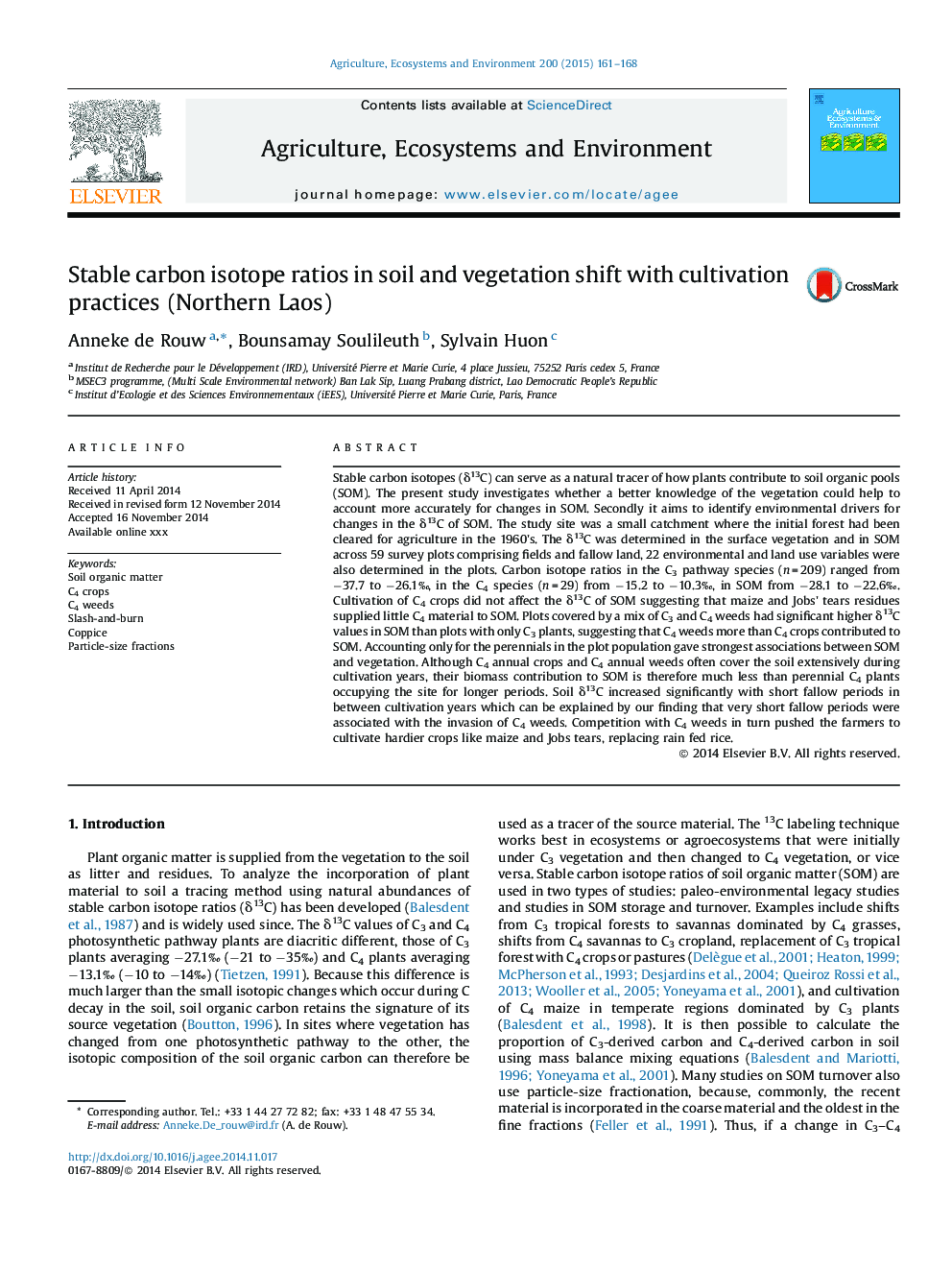| Article ID | Journal | Published Year | Pages | File Type |
|---|---|---|---|---|
| 8487808 | Agriculture, Ecosystems & Environment | 2015 | 8 Pages |
Abstract
Stable carbon isotopes (δ13C) can serve as a natural tracer of how plants contribute to soil organic pools (SOM). The present study investigates whether a better knowledge of the vegetation could help to account more accurately for changes in SOM. Secondly it aims to identify environmental drivers for changes in the δ13C of SOM. The study site was a small catchment where the initial forest had been cleared for agriculture in the 1960's. The δ13C was determined in the surface vegetation and in SOM across 59 survey plots comprising fields and fallow land, 22 environmental and land use variables were also determined in the plots. Carbon isotope ratios in the C3 pathway species (n = 209) ranged from â37.7 to â26.1â°, in the C4 species (n = 29) from â15.2 to â10.3â°, in SOM from â28.1 to â22.6â°. Cultivation of C4 crops did not affect the δ13C of SOM suggesting that maize and Jobs' tears residues supplied little C4 material to SOM. Plots covered by a mix of C3 and C4 weeds had significant higher δ13C values in SOM than plots with only C3 plants, suggesting that C4 weeds more than C4 crops contributed to SOM. Accounting only for the perennials in the plot population gave strongest associations between SOM and vegetation. Although C4 annual crops and C4 annual weeds often cover the soil extensively during cultivation years, their biomass contribution to SOM is therefore much less than perennial C4 plants occupying the site for longer periods. Soil δ13C increased significantly with short fallow periods in between cultivation years which can be explained by our finding that very short fallow periods were associated with the invasion of C4 weeds. Competition with C4 weeds in turn pushed the farmers to cultivate hardier crops like maize and Jobs tears, replacing rain fed rice.
Related Topics
Life Sciences
Agricultural and Biological Sciences
Agronomy and Crop Science
Authors
Anneke de Rouw, Bounsamay Soulileuth, Sylvain Huon,
